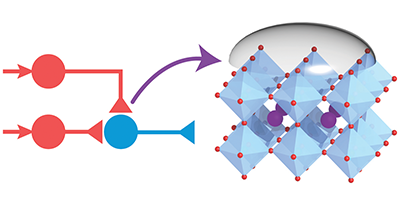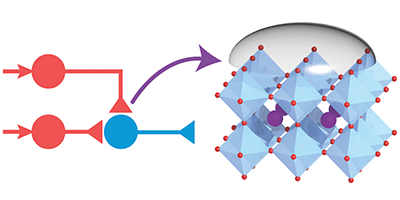Mimicking the Brain
Neuromimetic devices—artificial electronics that mimic the brain’s neurons—could be used to study how the brain works or to design circuits that borrow from the brain’s computing ability. Such devices emulate neurons and the synapses between them with voltage-driven circuits that exchange signals in a connected network. But conventional circuits cannot easily reproduce the synapses’ ability to strengthen and weaken over time with stimulation—a key property, known as “plasticity,” that forms the basis of learning and memory. A research group at Harvard University, led by Shriram Ramanathan, has now demonstrated neuromimetic circuits that replicate the plasticity of synapses. Their schemes are able to simulate a variety of neural processes: learning, unlearning, and storing memories.
The authors use a synapse-like unit they previously demonstrated: a transistor whose current depends on the resistivity of its channel, made of a samarium nickel oxide (SNO). SNO’s properties are key to plasticity: unlike conventional semiconductors, this strongly correlated system can have a much greater range of possible resistivity states. When the synapse is stimulated electrically, the resistivity changes to a different value. Based on such plastic behavior, the researchers demonstrate small circuits, consisting of several transistors, which carry out a variety of neural functions. The devices are capable, for instance, of learning that two stimuli are linked (like the association between food and a bell ring in Pavlov’s famous experiments with dogs). They can also unlearn (if the stimuli are not coupled for some time, the association is forgotten) and store memories of received stimuli.
This research is published in Physical Review Applied.
–Matteo Rini





